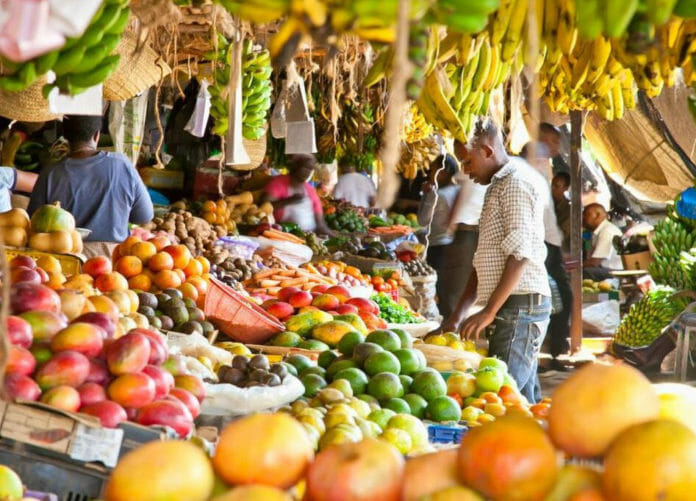The Department of Statistics Malaysia (DOSM) released the Supply and Utilization Account (SUA)Selected Agricultural Commodities, 2018-2022. This publication covers 54 selected agricultural commodities consists of subsectors crops, livestock and fisheries. Production, exports and imports statistics as well as three main indicators namely self-sufficiency ratio (SSR), import dependency ratio (IDR) and per capita consumption (PCC) are presented in this publication.
The compilation of SUA encompasses the selected agricultural commodities refers to three categories, namely crops (fruits, vegetables and others), livestock and fisheries. In 2022, a total of 54 agricultural commodities including four new items which include apple, onion, garlic and shallot were covered and 23 of them recorded self-sufficiency ratio (SSR) more than 100.0 per cent.
The Chief Statistician of Malaysia, Dato’ Sri Dr. Mohd Uzir Mahidin, stated that published statistics can serve as indicators for assessing the level of domestic production and dependence on imports for selected agricultural commodities. SSR can be used as a measure of domestic production level and the availability of food supplies to meet the country’s food needs.
A high SSR provides an indication that the country’s food supply is sufficient, which is one of dimension in food security. Availability refers to domestic production, imports, exports, and existing stocks within the country. SSR that reaches 100.0 per cent and above indicates supply or production for certain agricultural commodity is sufficient for fulfilling the country’s needs, and vice versa.
The crops subsector consists of fruits, vegetables and other crops. Based on the Supply and Utilization Account Selected Agricultural Commodities, the supply for eight selected fruits in 2022 is sufficient to fulfil domestic demand with SSR value exceeding 100.0 per cent. Papaya recorded the highest SSR, 142.3 per cent (2021:146.9%), followed by watermelon, 131.9 per cent (2021: 139.5%) and starfruit, 120.2 per cent (2021: 116.9%).
Seven types of selected vegetables are sufficient for domestic needs namely tomato, 118.0 per cent (2021: 118.9%); cucumber, 110.6 per cent (2021: 111.7%); spinach, 109.6 per cent (2021: 112.0%); lettuce, 107.3 per cent (2021: 107.5%); long bean, 106.6 per cent (2021: 109.3%); brinjal, 106.6 per cent (2021: 109.6%); and lady’s finger, 103.4 per cent (2021: 104.3%). Simultaneously, the supply of sugarcane and cassava for other selected crops was also sufficient, with each recording SSR of 144.6 and 100.5 per cent respectively.
Livestock commodity which recorded SSR of more than 100.0 per cent in 2022 were duck meat and chicken/ duck egg. Duck meat recorded the highest SSR at 130.2 per cent (2021: 130.6%), and chicken/ duck egg (2022: 108.9%; 2021: 114.4%). Meanwhile, for fisheries, only four items recorded SSR of 100.0 per cent and more namely seabass, 116.5 per cent (2021: 114.1%); freshwater catfish, 102.2 per cent (2021: 108.3%); tuna, 100.9 per cent (2021: 98.8%); and river catfish, 100.0 per cent (2021: 100.0%).
Mohd Uzir explained the concept of IDR of which it determines the level of a country’s dependency on agricultural commodity imports to meet domestic needs.
A high IDR value indicates that a country is heavily reliant on agricultural commodity imports. Despite Malaysia having its own agricultural production, the country still depends on imports from other countries for some items. In addition, trade data released by DOSM showed that Malaysia’s cumulative food imports in overall, for over a five years period (2018-2022) amounted RM296.4 billion, increased by 31.8 per cent as compared to the previous five years (2013-2017: RM224.9 billion).
At the same time, focusing on the 54 items which consists in the publication of Supply and Utilization Accounts Selected Agricultural Commodity, he also mentioned that the quantities of production, imports, and exports for the period 2018-2022 increased at compounded annual growth rates by 19.0 per cent, 14.7 per cent, and 22.2 per cent, respectively.
He added, Malaysia imported RM75.6 billion food products as compared to RM44.6 billion of exports in 2022. A higher increase in imports compared to exports has led to an increase in the trade deficit of food products amounted to RM31.0 billion, 24.3 per cent higher than the previous year.
Eight items recorded IDR that exceeded 50.0 per cent in 2022 namely mutton (2022: 91.5%; 2021: 89.4%); beef (2022: 85.6 %; 2021: 81.6%); ginger (2022: 85.6%; 2021: 86.5%); mango (2022: 79.7%; 2021: 92.6%); chilli (2022: 74.0%; 2021: 75.1%); cuttlefish (2022: 70.6%; 2021: 65.3%); fresh milk (2022: 63.6%; 2021: 62.9%); and round cabbage (2022: 55.5%; 2021: 61.3%).
At the same time, due to climate inconsistencies, the country is prompting to continue importing agricultural products such as onions, shallots, garlic and apples.
The Per Capita Consumption (PPC) indicator refers to the supply of agricultural commodities available per capita. Rice, which is the staple food of the country, continued to show a declining trend in 2022, with the PCC of rice available being 77.0 kilograms per year, as compared to 2021 (79.5 kg/year).
Coconut was the most consumed fruit by the population in 2022 with PCC 24.2 kg/year. This was followed by durian, 12.4 kg/year and pineapple, 12.2 kg/year.
The highest PCC for selected vegetables was round cabbage with 7.6 kg/year, increased 1.0 kilogramme as compared to 2021. This was followed by mustard and tomato with 4.5 and 4.4 kg/year respectively. The lowest PCC in 2022 was brinjal with 1.3 kg/year.
Onion recorded a high PCC with an availability level of 14.8 kg/year while garlic and shallot recorded 4.9 and 1.2 kg/year respectively. The highest PCC for other selected crops was ginger with 1.9 kilogrammes per year. While the lowest PCC was sugarcane with 0.005 kg/year.
Livestock commodity showed PCC for chicken meat was the highest, 48.0 kilogrammes per year, increased by 2.0 kilogrammes as compared to 2021. This was followed by chicken/ duck egg, 22.6 kg/year which equivalent to 377 pieces/year.
The lowest PCC in 2022 was mutton at 1.4 kg/year, increased by 0.4 kilogramme as compared to the previous year. PCC of mackerel and shrimp was the highest among selected fisheries which were 6.0 and 4.2 kg/year. PCC of stingray and crab was the lowest at 0.4 kg/year.









